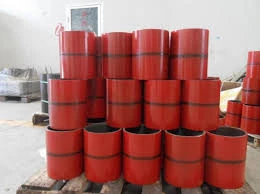- Afrikaans
- Albanian
- Amharic
- Arabic
- Armenian
- Azerbaijani
- Basque
- Belarusian
- Bengali
- Bosnian
- Bulgarian
- Catalan
- Cebuano
- Corsican
- Croatian
- Czech
- Danish
- Dutch
- English
- Esperanto
- Estonian
- Finnish
- French
- Frisian
- Galician
- Georgian
- German
- Greek
- Gujarati
- Haitian Creole
- hausa
- hawaiian
- Hebrew
- Hindi
- Miao
- Hungarian
- Icelandic
- igbo
- Indonesian
- irish
- Italian
- Japanese
- Javanese
- Kannada
- kazakh
- Khmer
- Rwandese
- Korean
- Kurdish
- Kyrgyz
- Lao
- Latin
- Latvian
- Lithuanian
- Luxembourgish
- Macedonian
- Malgashi
- Malay
- Malayalam
- Maltese
- Maori
- Marathi
- Mongolian
- Myanmar
- Nepali
- Norwegian
- Norwegian
- Occitan
- Pashto
- Persian
- Polish
- Portuguese
- Punjabi
- Romanian
- Russian
- Samoan
- Scottish Gaelic
- Serbian
- Sesotho
- Shona
- Sindhi
- Sinhala
- Slovak
- Slovenian
- Somali
- Spanish
- Sundanese
- Swahili
- Swedish
- Tagalog
- Tajik
- Tamil
- Tatar
- Telugu
- Thai
- Turkish
- Turkmen
- Ukrainian
- Urdu
- Uighur
- Uzbek
- Vietnamese
- Welsh
- Bantu
- Yiddish
- Yoruba
- Zulu
Versatile Coupling Tube Fittings for Secure and Reliable Connections in Various Applications
Understanding Coupling Tube Fittings An Essential Component in Fluid Systems
In the realm of fluid management systems, coupling tube fittings play a vital role in ensuring the efficient transfer of liquids and gases. These components serve as connectors that join two tubes or pipes, creating a secure and leak-proof seal. Given their essential function in various applications—from industrial machinery to household plumbing—understanding the intricacies of coupling tube fittings is crucial for engineers, technicians, and DIY enthusiasts alike.
The Basics of Coupling Tube Fittings
Coupling tube fittings come in various designs, shapes, and sizes, each tailored to specific applications and environments. Primarily, these fittings are used to connect pipe segments, allowing for the easy passage of fluids. The most common types of coupling fittings include compression fittings, solder fittings, and push-to-connect fittings.
1. Compression Fittings These are widely used in plumbing and other applications where a permanent, leak-proof connection is required. Compression fittings work by compressing a ring (the ferrule) around the tube as the nut is tightened. This action creates a watertight seal that prevents fluid leaks.
2. Solder Fittings Often used in soldered copper pipe systems, these fittings are heated, causing the solder to melt and create a solid connection once it cools. This type of fitting is favored for its durability and strength in high-pressure environments.
3. Push-to-Connect Fittings Ideal for quick assembly and disassembly, push-to-connect fittings allow operators to insert tubes into the fitting without needing tools. They are widely used in pneumatic systems and can be especially advantageous in applications where space is constraint.
Applications of Coupling Tube Fittings
Coupling tube fittings find applications across various industries, operating in environments ranging from simple residential plumbing systems to complex industrial processes. In the automotive industry, for example, these fittings are crucial for the efficient functioning of fuel systems, ensuring that gasoline or diesel flows smoothly from the tank to the engine.
In the pharmaceutical and food processing industries, hygiene and compliance with regulatory standards are paramount. Here, coupling fittings are manufactured from materials that are resistant to corrosion and contaminants, ensuring that the fluids transported remain pure and uncontaminated.
coupling tube fitting

Moreover, in high-tech sectors such as aerospace, coupling tube fittings are engineered to withstand extreme pressures and temperatures. Their ability to maintain integrity under challenging conditions makes them an indispensable component in the design of aircraft systems.
Selecting the Right Coupling Tube Fitting
When it comes to selecting the appropriate coupling tube fitting, several factors must be considered, including the type of fluid being transported, the operating pressure and temperature, and the materials involved. For example, corrosive fluids may require fittings made from stainless steel or specialized plastics to resist degradation, while high-temperature applications might necessitate fittings that can withstand thermal expansion.
It’s also important to take the size of the pipes or tubes into account. Misalignment in sizes can lead to leakage and other operational failures. Therefore, having accurate measurements and understanding the specific requirements of the application can significantly affect the performance and longevity of the fitting.
Maintenance and Safety Considerations
Regular inspection and maintenance of coupling tube fittings are critical to ensuring their functionality and safety. Over time, wear and tear can lead to issues such as leaks, which not only compromise operational efficiency but also pose safety hazards. Utilizing proper installation techniques and adhering to manufacturer guidelines can help mitigate these risks.
Moreover, it's vital to consider the compatibility of the fitting materials with the fluids being transported. Incompatible materials can lead to chemical reactions that can deteriorate the fitting and compromise the system.
Conclusion
In conclusion, coupling tube fittings are essential components in many fluid control systems, combining functionality with safety and durability. Understanding the different types of fittings, their applications, and the considerations necessary for proper maintenance can enhance the overall efficiency of fluid systems. As technology advances, innovations in fitting designs and materials are likely to evolve, further improving the reliability and performance of coupling tube fittings across diverse industries. Whether in a household setup or a complex industrial environment, the importance of selecting the right fitting cannot be understated.
-
Tubing Pup Joints: Essential Components for Oil and Gas OperationsNewsJul.10,2025
-
Pup Joints: Essential Components for Reliable Drilling OperationsNewsJul.10,2025
-
Pipe Couplings: Connecting Your World EfficientlyNewsJul.10,2025
-
Mastering Oilfield Operations with Quality Tubing and CasingNewsJul.10,2025
-
High-Quality Casing Couplings for Every NeedNewsJul.10,2025
-
Boost Your Drilling Efficiency with Premium Crossover Tools & Seating NipplesNewsJul.10,2025







